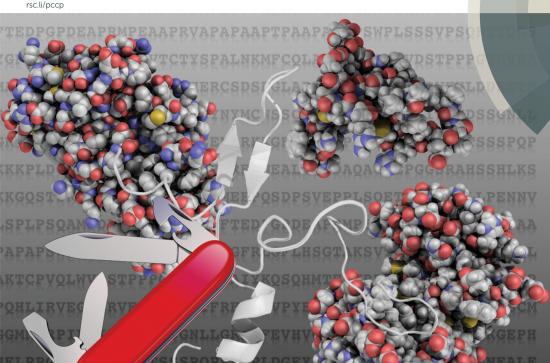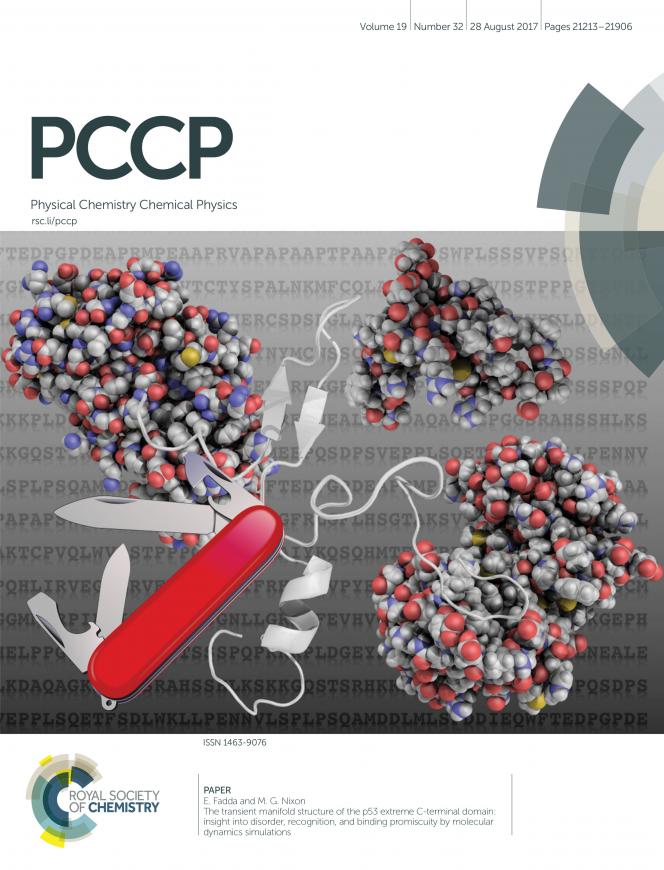
Research work from Dr Elisa Fadda (PI) and Matthew G Nixon (PhD candidate) of the Computational Biophysics Group in the Department of Chemistry features on the cover of the latest issue of the Physical Chemistry Chemical Physics (PCCP) journal.
In this work, Dr Fadda and Mr Nixon have studied the dynamic behaviour of a 22 residue peptide, corresponding to the C-terminal section (C-ter) of the p53 tumour suppressor. The p53-Cter region has important regulatory functions of the p53 DNA-binding activity and it is known to be extremely flexible (or intrinsically disordered), with no 3D structure identifiable by experimental techniques.
Through extensive sampling (exceeding 22 μs of cumulative simulation time) Dr Fadda and Mr Nixon were able to characterize within the p53-Cter conformational disorder, structurally distinct 3D short features that could facilitate selective binding to multiple receptors, thus the p53-Cter notorious binding promiscuity. As part of his PhD research, Mr Nixon uses this type of molecular level information to design new bio-mimetic systems that target specifically transient and reversible biomolecular interactions for the development of novel diagnostic/therapeutic strategies.
The Irish Centre for High-End Computing (ICHEC) is gratefully acknowledged for generous computational time allocation. EF is an associate member of the Hamilton Institute at Maynooth University.
Fadda E. and MG Nixon "The transient manifold structure of the p53 extreme C-terminal domain: insight into disorder, recognition, and binding promiscuity by molecular dynamics simulations" PCCP, 19(32):21287-21296 http://dx.doi.org/10.1039/C7CP02485A

